Subfamilia: CERAMBYCINAE / Tribus: CALLIDIINI
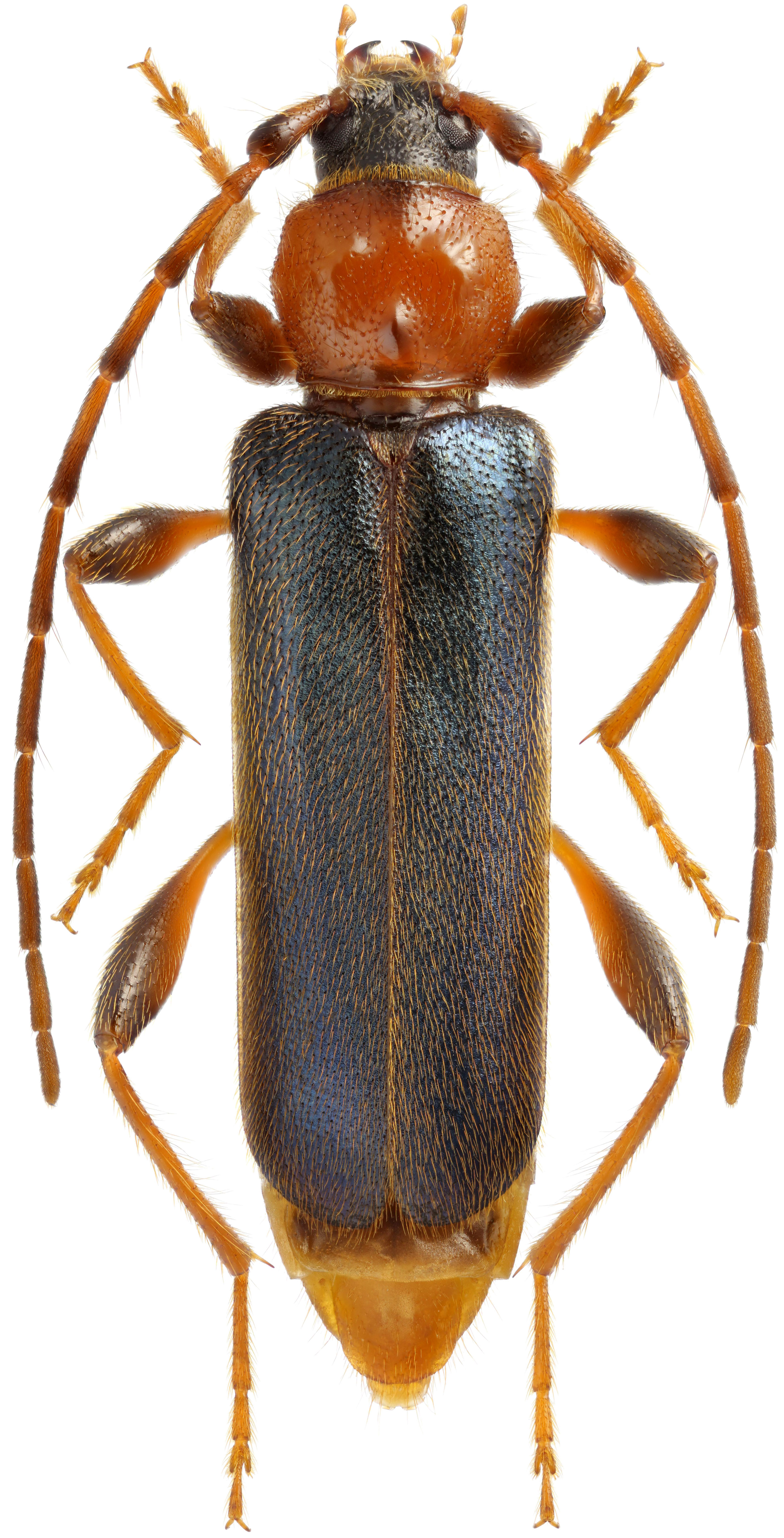
[Photo © David Navrátil and Kirill V. Makarov, click on the picture for 4K resolution]
Phymatodes testaceus is a common and widespread Eurasian longhorn beetle occurring in deciduous forests of all types, log and unbarked lumber warehouses, as well as in house firewood. Development under/in the bark of freshly and also long-dead deciduous trees. Pupation in a hook-shape pupal cell in wood, rarely under the bark or in the bark. P. testaceus attacks branches and trunks of any diameter. Stored dry wood with bark attacks for many years in a row. Life cycle two years, according to some sources even one year. Species overwinters as a larva, adults occur from late May to July, rarely in August, with peak in the first half of June. Crepuscular and noctural species, often attracted by light. During the day, the beetles are hidden in crevices, under wood, under detached bark, etc., they do not visit flowers [❖].
P. tescaceus is a highly variable species in coloration. In Central Europe occurs mostly forms with blue elytra and a red/dark pronotum, or with yellow-brown elytra with dark apical part and red pronotum. Legs are also very variable in coloration, from yellow-brown to almost black. The typical form with completely yellow-brown elytra is extremely rare in Central Europe, but common in Southern Europe.
Body length: 6 - 18 mm Life cycle: 1 - 2 years Adults in: May - July Host plant: polyphagous in deciduous trees, but prefers oak (Quercus) Distribution: Algeria, Egypt, Libya, Morocco, Tunisia, Albania, Austria, Belgium, Bulgaria, Croatia, Czechia, Finland, France, Germany, Hungary, Italy, Luxembourg, Norway, Poland, Portugal, Romania, Russia, Slovakia, Slovenia, Spain, Sweden, Switzerland, United Kingdom, Iran, Israel, Lebanon, Turkey
The depicted mounted beetles were: ♂ - reared from pupa found in dead oak in Azrou (أزرو/ⴰⵥⵔⵓ) environs (Ifraneprovince, Fès-Meknès region, Morocco) on April 15, 2023; ♀ - captured using wind trap in Pavlovskaya Sloboda (Павловская Слобода) village environs (N55°47′57″ E37°4′26″; Istrinsky district, Moscow oblast, Russia) on June 9-13, 2020.The depicted living beetles were: (MP) reared from larva found in a dead oak (Quercus sp.) in Křivoklátsko Protected Landscape Area (Rakovník district, Central Bohemia, Czechia); (DR) photographed in Mcely village environs (Nymburk district, Central Bohemia, Czechia) on June 1, 2019.
Collected by Petr Papoušek, Kirill V. Makarov, Miroslav Polcar and Daniel Rydzi
[❖]
Sláma M.E.F.:
Tesaříkovití – Cerambycidae České republiky a Slovenské republiky / Cerambycidae of the Czech Republic and Slovak Republic.
Milan Sláma private printing, Krhanice, 383pp [pages 145-146], 1998 [ISBN: 80-238-2627-1]. [download]

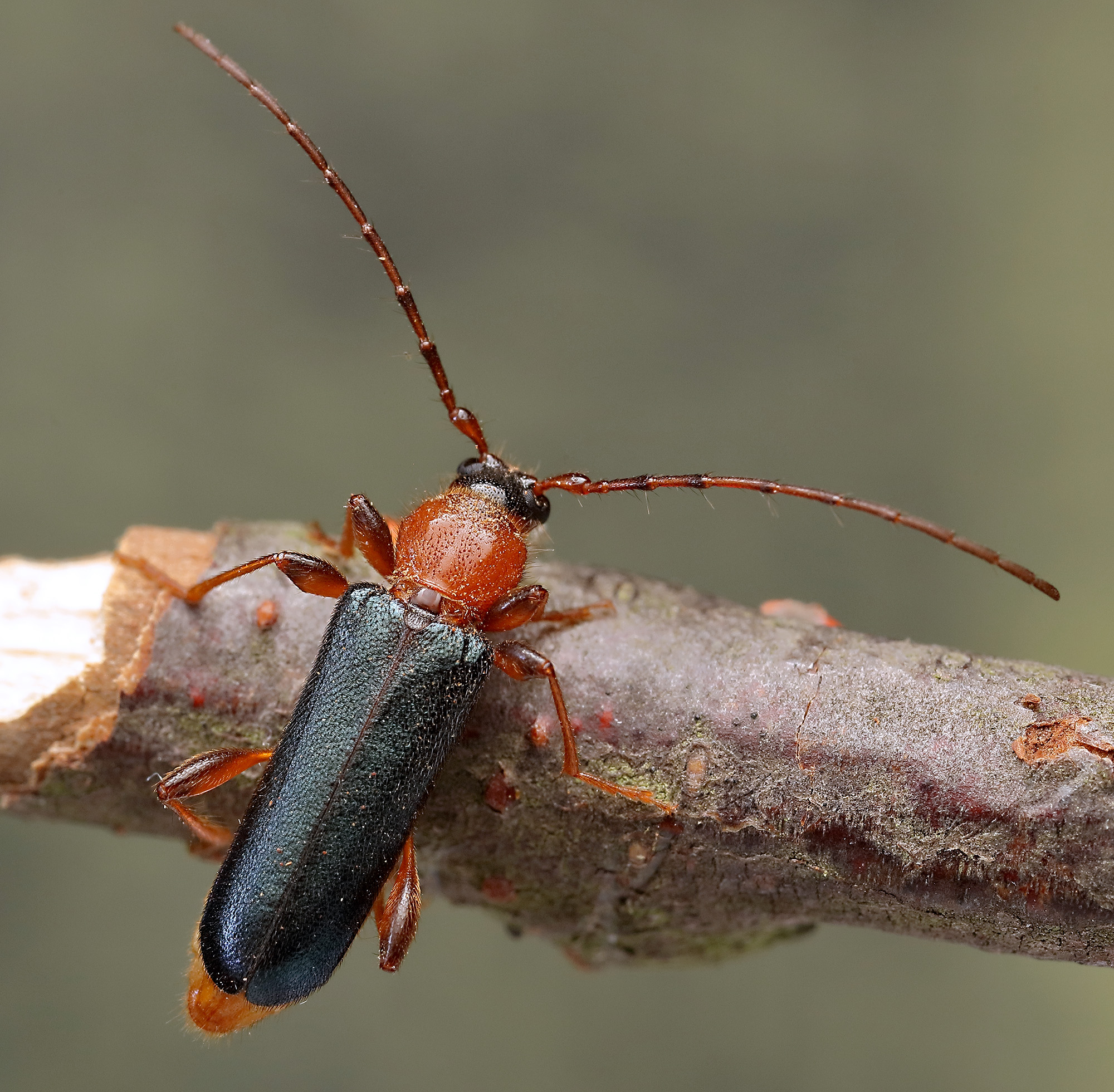
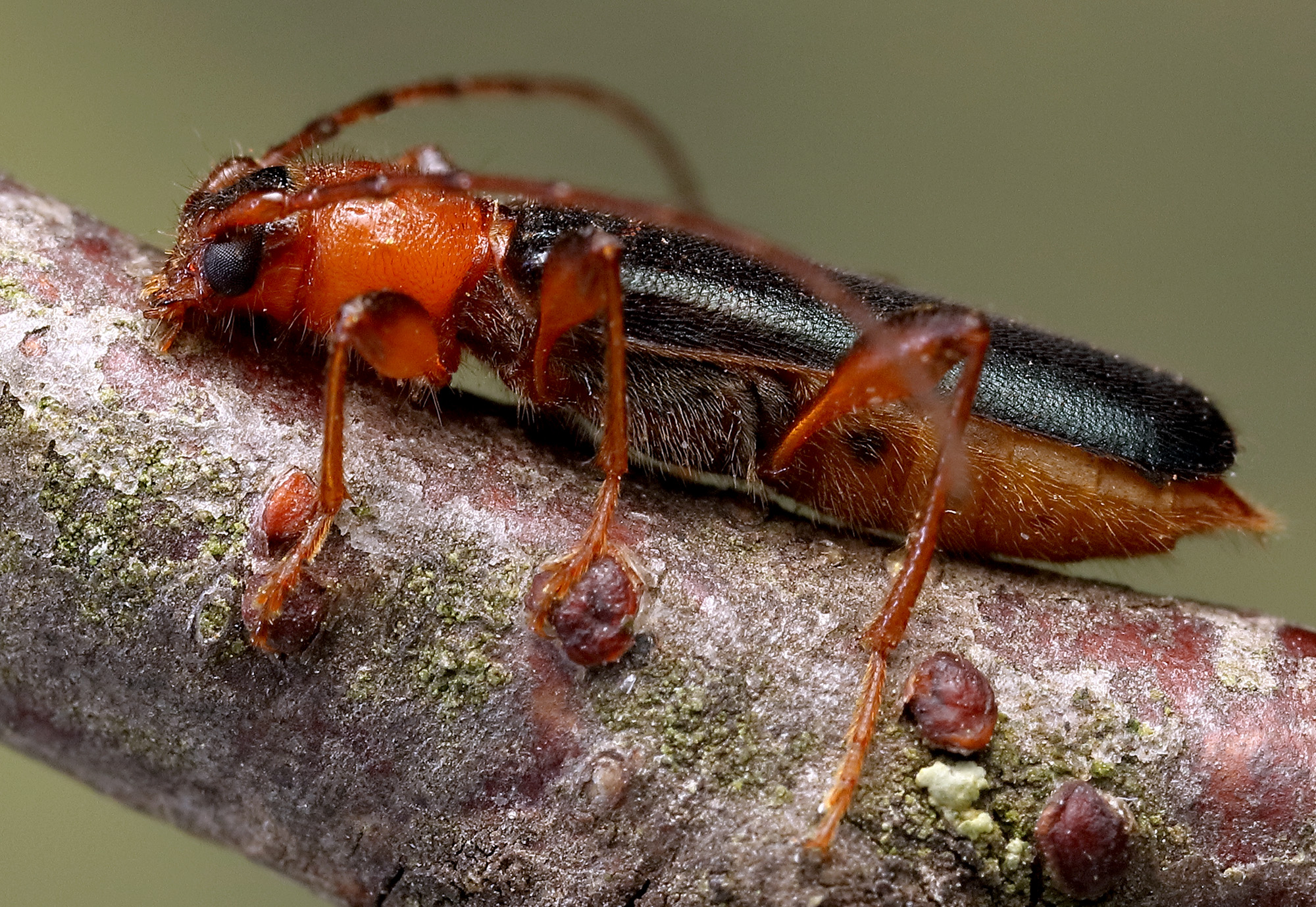
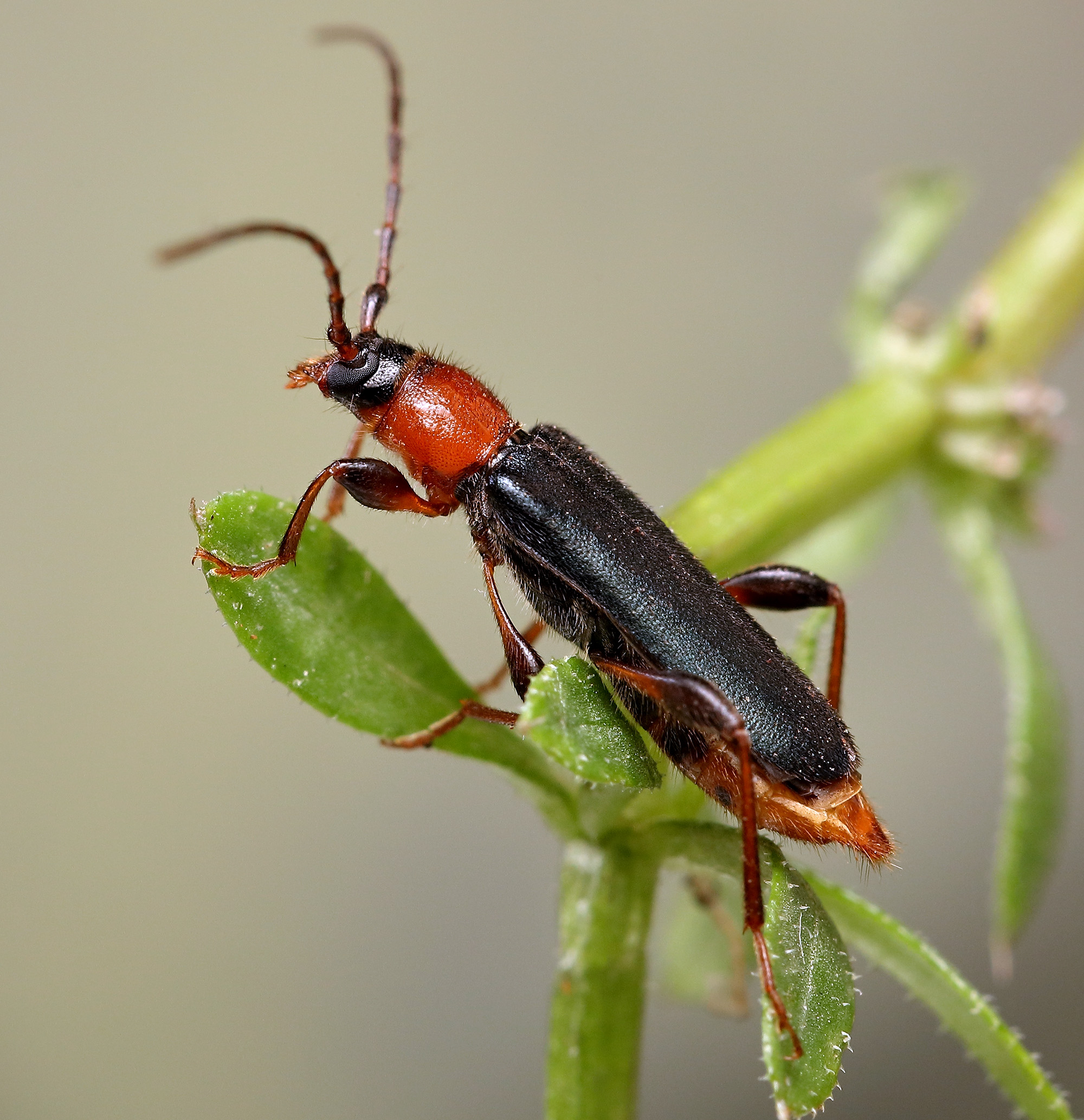
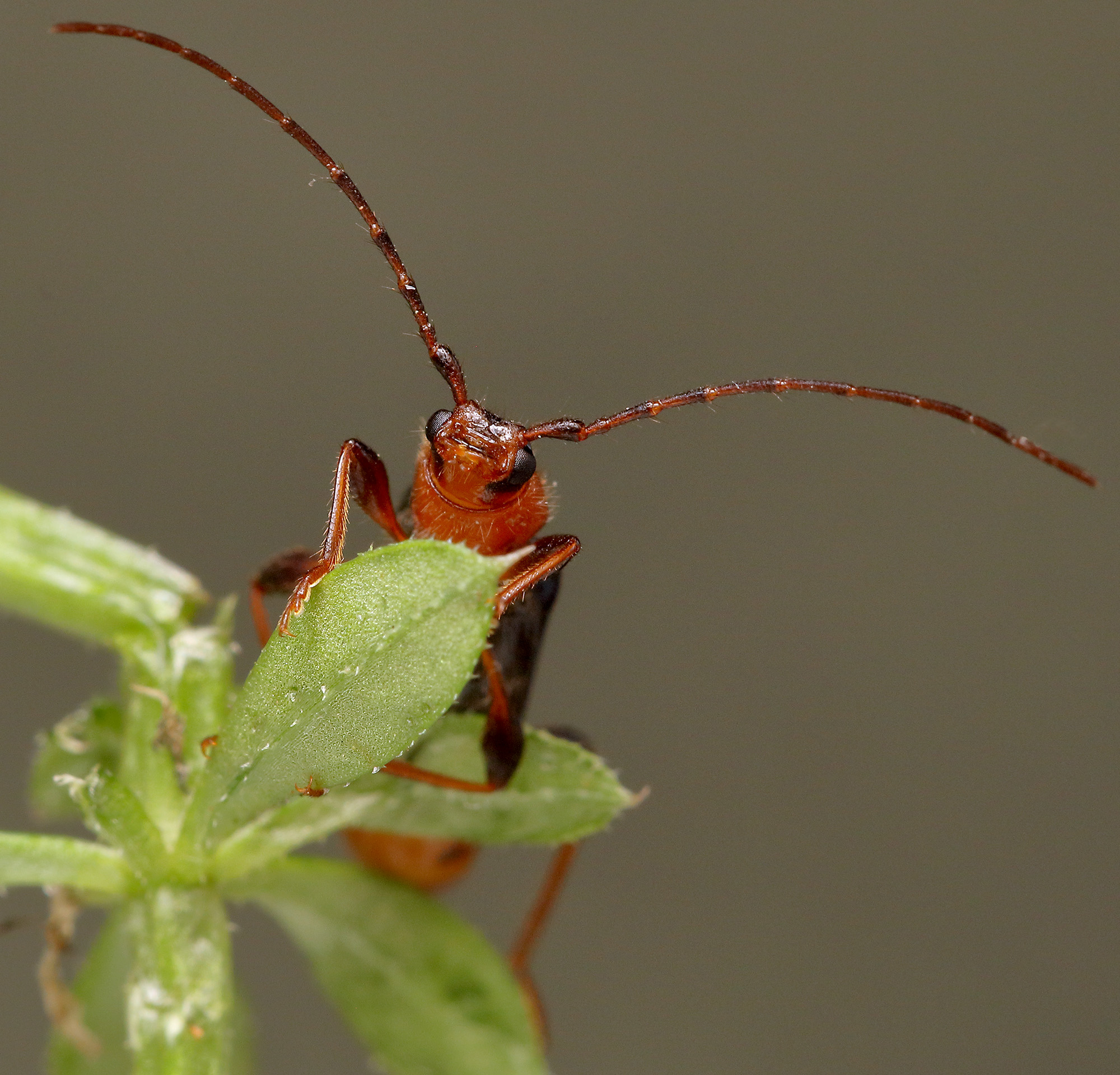
Phymatodes (Phymatodes) testaceus, MP [Photo © Milan Lovětínský]
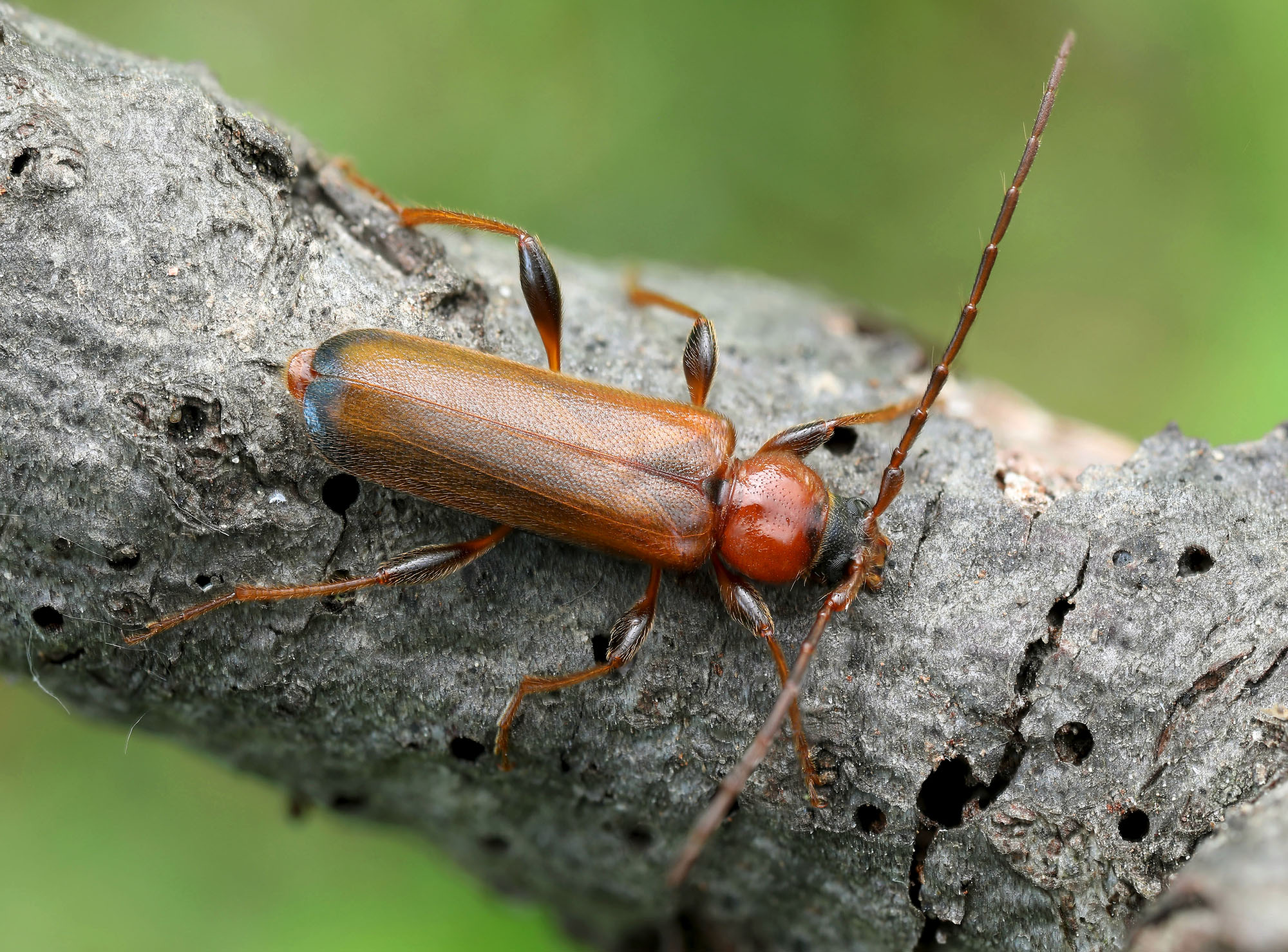
Phymatodes (Phymatodes) testaceus, DR [Photo © Daniel Rydzi]
| Subfamilia | Cerambycinae Latreille, 1802 |
| Tribus | Callidiini Mulsant, 1839 |
| Genus | Phymatodes Mulsant, 1839 |
| Subgenus | Phymatodes Mulsant, 1839 |
| Species | Phymatodes (Phymatodes) testaceus (Linnaeus, 1758) |
